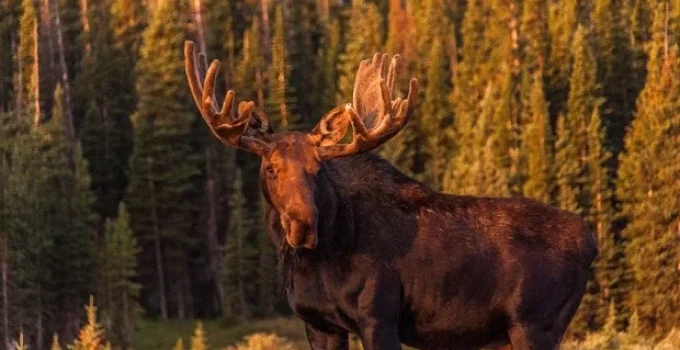How Long Do Moose Live?
Moose typically live 10 to 15 years in the wild, although some can reach up to 20 years under ideal conditions.
Their lifespan depends heavily on environmental factors such as predators, disease, climate, and human activity. Calf mortality is high, but those that survive their early years can live a decade or more—especially in regions with fewer predators and stable food supplies.
Dive Deeper
- Quick Summary Table
- Average Lifespan of a Moose
- Factors That Affect Moose Longevity
- Signs of Aging in Moose
- 🧪 Additional Insights
- 🎯 Final Thoughts
- 📚 References
🔍 Quick Summary Table
| Environment | Typical Lifespan | Key Limiting Factors |
|---|---|---|
| Wild (average) | 10–15 years | Predators, disease, accidents |
| Wild (maximum) | Up to 20 years | Requires stable, protected habitat |
| Captivity | Up to 25 years | Veterinary care, no predators |
| First-year calves | 30–70% mortality rate | Predation, malnutrition, exposure |
📈 Average Lifespan of a Moose
The typical moose lifespan falls between 10 and 15 years in the wild. Males (bulls) often live slightly shorter lives than females (cows), especially in areas with heavy hunting or high predation during the rutting season.
📊 Stat: In Alaska and Canada, most wild moose die between ages 8 and 12, with relatively few reaching their late teens [1].
⚠️ Factors That Affect Moose Longevity
Predation
Calves are the most at risk. Wolves, bears, and cougars account for high early-life mortality. Adults face fewer threats, but weakened moose—especially in winter—can still fall prey.
📊 Stat: In some ecosystems, only 30–40% of calves survive their first year [2].
Parasites and Disease
One of the most significant threats to longevity is parasite overload, particularly:
- Winter ticks – cause blood loss, fur loss, and energy depletion
- Brainworm (Parelaphostrongylus tenuis) – fatal neurological condition in regions shared with white-tailed deer
- Liver flukes and lungworms – impair organ function
➤ Fun Fact: A single moose can carry up to 70,000 ticks in winter, severely weakening its health.
Climate and Winter Stress
Severe cold, deep snow, and limited forage can reduce lifespan:
- Burns extra energy reserves
- Increases difficulty accessing food
- Lowers immune function
Climate change is also expanding tick ranges and creating more freeze-thaw cycles that stress moose metabolism.
📊 Stat: Moose in warmer U.S. regions like New Hampshire have seen up to 40% population declines due to climate-linked tick infestations [3].
Human Activity
Humans reduce moose lifespan through:
- Hunting (regulated and poaching)
- Vehicle collisions
- Habitat fragmentation
📊 Stat: In some areas, moose-vehicle collisions are responsible for 20–25% of annual adult moose deaths [4].
🛑 Signs of Aging in Moose
As moose age, they show visible and behavioral changes:
- Worn teeth and reduced foraging efficiency
- Arthritic joints and slowed movement
- Decreased antler size in older bulls
- Thinner bodies due to poor digestion or parasites
Older moose are also more vulnerable to predators due to reduced mobility and slower reaction time.
🧪 Additional Insights
Want to explore more about moose longevity and survival?
- Comparative Lifespan Studies – Data across Alaska, Scandinavia, and New England
- Parasite Ecology Research – How ticks and brainworm infestations shorten lives
- Impact of Hunting Regulations – Effects of harvest quotas on average moose age
- Climate and Moose Health Models – Predictions for how warming affects moose survival
🎯 Final Thoughts
Moose may look invincible, but their lifespan is shaped by a complex interplay of threats—from ticks to trucks. While a moose can live 15–20 years, most fall short of that due to predation, parasites, and environmental stress. Conservation, climate awareness, and habitat protection all play a role in helping these giants live longer, healthier lives.
📚 References
- Schwartz, C. C., & Hundertmark, K. J. (1993). “Reproductive characteristics of Alaskan moose.” Journal of Wildlife Management.
- Ballard, W. B., et al. (2001). “Predation and survival of moose calves in Alaska.” Journal of Wildlife Management.
- Jones, H., et al. (2019). “Climate impacts on moose and tick interactions.” Ecology and Evolution. https://doi.org/10.1002/ece3.5113
- New Hampshire Fish and Game. (2020). “Moose mortality and highway collisions.” https://www.wildlife.state.nh.us
